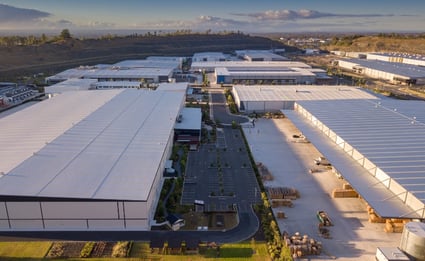The 5 Biggest Stories in Supply Chain Management
Nick Ostdick - December 08, 2016

As the year comes to a close, many OEMs and other major players in automotive supply chain start to reflect on the last 12 months with an eye toward insight and enlightenment on the concerns, considerations, and lessons learned throughout the year. This not only helps companies best prepare for the coming year in terms of predicting possible trends, challenges, or opportunities, but it also helps those in the supply chain evaluate how efficiently they responded to this year’s challenges and opportunities - how agile, transparent, and visible they truly are.
Without doubt, 2016 was a busy year for automotive supply chain professionals. Technology, expansion into new and emerging markets, political and financial instability across a number of major European regions, and other issues provided OEMs with a host of top-tier concerns from which to respond and react in order to keep the supply chain clear of bottlenecks and ensure continued production.
In an effort to reflect on the past year while at the same time beginning to think about what 2017 might have in store for the automotive supply chain, here are 5 of the biggest stories in supply chain management during 2016.
Market expansion
It’s no secret the name of the game in 2016 was continued expansion and globalization in supply chain logistics and operations planning. Given the recent developments with the Trans Pacific Partnership (TTP), companies could now, more than ever, have the ability to establish themselves in new emerging markets and create new supply and distribution hubs to enable further development. However, this potential for rapid growth did not come without its share of potential complications. The complexities of a market’s taxation, shifting political policies, competition for resources, and economies of scale were important concerns for any supply chain manager looking to begin operations in a new region.
From a supply perspective, this is where the utilization of Big Data and in-depth, real-time reporting was crucial in establishing best practices and leveraging value-added solutions to ensure operations in these new markets function as cost-effectively as possible. For example, integrated transportation management solutions were and remain vital in tracking the quantity of product shipped, the reliability of delivery, freight methods and routes – rail, air, etc – and overall ROI with potential third-party freight partners. These functions are crucial in considering the costs of doing business in a new market and providing supply chain managers with the best data possible to make educated, financially-sound decisions.
Collaboration and connectivity
Full integration and optimization of supply chain planning software solutions across a company’s entire sales and operation planning (S&OP) landscape were more crucial than ever in fostering a collaborative spirit. Big Data and the use of detailed analytics and reporting have become key driver in helping companies utilize real-time feedback to not only make quick, cost-effective decisions when it comes to inventory, demand, and freight, but also to communicate the impact of these decisions to OEMs and others within their company.
This high-level of collaboration and data sharing has become a major element to increase visibility and accountability across all stages of the supply chain and allowing companies to eliminate communication silos - a top-down, isolated supply chain practice that inhibits connectivity and collaboration - in the supply chain and implement horizontal integrations to foster communication, data sharing, and transparency throughout the supply stream.
Smaller tech
The proliferation of tablets, smartphones, and other on-the-go devices finally reached the supply chain sector in 2016, and OEMs were well-served getting on the bandwagon during 2016 to remain competitive within the field. As with the rise of real-time analytics and interactive, dynamic reporting, a company’s ability to monitor supply chain statuses from anywhere in the world is a value added proposition, especially given the rapid-developing variables in today’s supply industry – such events as unpredictable weather patterns, labor strikes, or conflicts in hotly-contested regions across the globe.
This goes hand-in-hand with a movement during 2016 to simplify, streamline, and eliminate complexity across a wide variety of functions and operations throughout the automotive value chain. For example, companies may be accustomed to presenting someone in sales with a 200 page manual of a company’s supply chain process. However, given the myriad of technology available, the ease with which companies can create an infographic, video tutorial, or even a podcast should encourage them to simplify the verbiage in an effort to increase understanding and collaboration.
Technological integration
Of course, technology and the integration of advanced systems across the supply chain landscape is a core driver in supply chain efficiency, but such concerns are also crucial in fostering communication with companies. But recent trends such as Big Data and the Internet of Things made it much more critical for companies to adopt integrated systems. Given the uncertainties of today’s global supply chain, the capability to make accurate forecasts based on past demand is key to creating seamless workflows and preparing for potential supply chain disruptions. Big Data emerged as an integral aspect of that preparation as companies must incorporate and utilize these advanced metrics and reporting to improve inventory management and increase communication along the supply pipeline.
On a similar note, integrated systems were increasingly leveraged to produce real-time reporting and analysis, advanced simulations, and support forecasting and resource planning. This not only was essential to keep pace with competitors, but also maintained relevancy as the supply chain world continued its move towards complete digitization.
Transportation
Whether you’re talking about Green Technology, ensuring efficient movement of products in new and emerging markets without robust infrastructure, or the the best software solutions for container or yard management; transportation - or the simple movement of products from Point A to Point B - was a common discussion in 2016 as companies continued to source new strategies for supplying parts, resources, and materials throughout a disparate production network. Leveraging trailer loading versus air transit, third-party freight partnerships, LTL vs. FTL shipping, and route management and efficiency provided OEMs with some significant challenges in 2016 in maintaining delivery timetables in a cost-effective manner.
If you want to learn more get your Guide to Industry 4.0:
LATEST POSTS
- Understand Circular Economy in The Manufacturing Industry
- How Can Industry 4.0 IT Integration Be Achieved Smoothly?
- The Significance of Order Sequencing in Discrete Manufacturing
- How to improve your Supply Chain Management: The Power of Control Towers
- Optimizing Human Resource Scheduling in Manufacturing: A Technological Approach



